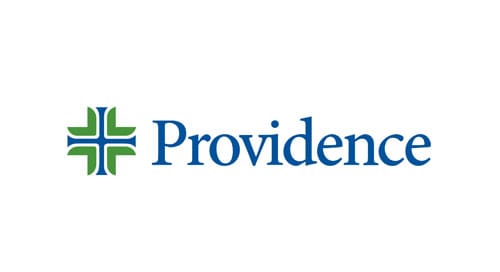Finding a Solution Deep in the Brain

Kerr had been seeing Natalie Diaz, MD, a neurologist specializing in movement disorders at the Pacific Neuroscience Institute at Providence Little Company of Mary, for several years. She and Dr. Diaz tried the conventional medications used to treat essential tremor, but they were either ineffective or caused too many side effects. As some of her other medical issues improved, Kerr recalls, “Dr. Diaz said that I’d be a good candidate for deep brain stimulation (DBS) surgery.”
Dr. Diaz says she likes working collaboratively with patients on decision-making. “I don’t think I’ve ever mentioned DBS to anyone and had them jump at it. I tell patients that my job is to give them all the available options, not to make the decision for them.”
Kerr appreciated the information resources the doctor shared and her efforts to explain the procedure thoroughly. “Dr. Diaz is wonderful,” Kerr says. “She’s very caring and concerned.”
DISCOVERING DBS
But what Kerr learned as she began educating herself about DBS was daunting. The treatment would involve three separate procedures, the first one in-office, where a neurosurgeon would figure out where electrodes should be placed in her brain. That would be followed by surgery to implant the electrodes via a small hole drilled in the skull. The third step would be to insert an implantable pulse generator (IPG) under the skin in her chest. After a few weeks for Kerr to heal, the pulse generator would be turned on to do its job disrupting the brain’s irregular signals to her hands.
Nonetheless, Kerr was excited about the possibility of controlling the tremors, something medications had not been able to do, and she trusted Dr. Diaz’s advice. “Brain surgery is a big deal,” says Kerr. “I worked closely with Dr. Diaz and she suggested Dr. Langevin to perform the multipart procedure.”
She met with Jean-Philippe Langevin, MD, a neurosurgeon specializing in movement disorders and the director of the Restorative Neurosurgery and Deep Brain Stimulation Program at the Pacific Neuroscience Institute. “The idea of surgery was really scary,” Kerr recalls, “but I had complete faith in Dr. Langevin and Dr. Diaz.”
A 100% SUCCESS
Kerr says she is delighted with the outcome of the surgery. “The tremors are gone!” she exclaims. “I didn’t expect it to completely get rid of them. It was a 100% success! I feel comfortable driving my car again.”
She even remembers being awakened an hour into the two-hour second surgery, so the surgical team could test the electrodes, and saying to them, “Thank you! Now I’ll be able to put on mascara.” (Because the brain has no pain receptors, surgery inside the brain doesn’t hurt.) She also remembers, “I told Dr. Langevin, ‘You changed my life.’ Both of the doctors changed my life.”
Dr. Langevin is also pleased about how well the DBS worked for Kerr. “Barb’s outcome is pretty much on par with what we’d expect,” he says. “For essential tremor, we typically see 85% to 90% control.” He is happy that she’s regained her quality of life. “Barb is an extrovert and a fun personality,” says Dr. Langevin. “We knew that the tremor was curtailing her life, and now she can get back to going out with friends.”
The Pacific Neuroscience Institute at Providence Little Company of Mary, which offers advanced clinical care, research and access to clinical trials as well as patient education and support, saw a 45% growth in its DBS program from 2021 to 2022. The institute was the first to adopt Medtronics’ advanced BrainSense technology, which makes the fine-tuning of the IPG more precise.
WHAT IS A MOVEMENT DISORDER?
Movement disorders are nervous system problems that cause muscles to move in ways that a person doesn’t want and can’t control. These kinds of neurological conditions usually worsen over time. They can affect a person’s ability to think and to speak and may harm their emotional well-being.
Although Parkinson’s disease is the movement disorder that people are probably most familiar with, essential tremor is the most widespread, as much as 20 times more common. It’s called “essential” because it’s not a symptom of or caused by any other disease or condition. Essential tremor usually starts in the hands, but the shaking (tremors) can also affect the face, head, neck or voice.
Other movement disorders include ataxia, which affects coordination; dystonia, which causes repeated involuntary muscle movements; and restless legs syndrome.
Deep brain stimulation (DBS) has been an established treatment since 1997 and it may be an option for people with movement disorders who have not received adequate relief of their symptoms with medications or can’t tolerate them.
Dr. Diaz notes that “DBS surgery should be considered as a treatment option to help maintain function and independence and not just as a last resort.” Studies have shown that the beneficial effect of DBS can last more than 10 years for essential tremor and more than 15 years for Parkinson’s.
For more information on Providence Little Company of Mary hospitals, call 844-925-0942.




